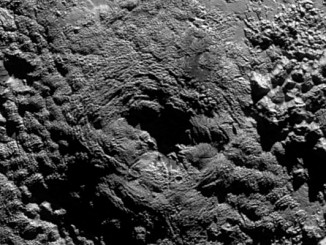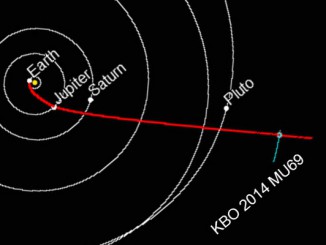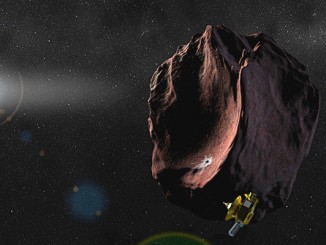
New Horizons collects first science on a post-Pluto object
Warming up for a possible extended mission as it speeds through deep space, NASA’s New Horizons spacecraft has now twice observed 1994 JR1, a 90-mile-wide Kuiper Belt object (KBO) orbiting more than 3 billion miles from the Sun. Science team members have used these observations to reveal new facts about this distant remnant of the early solar system.






